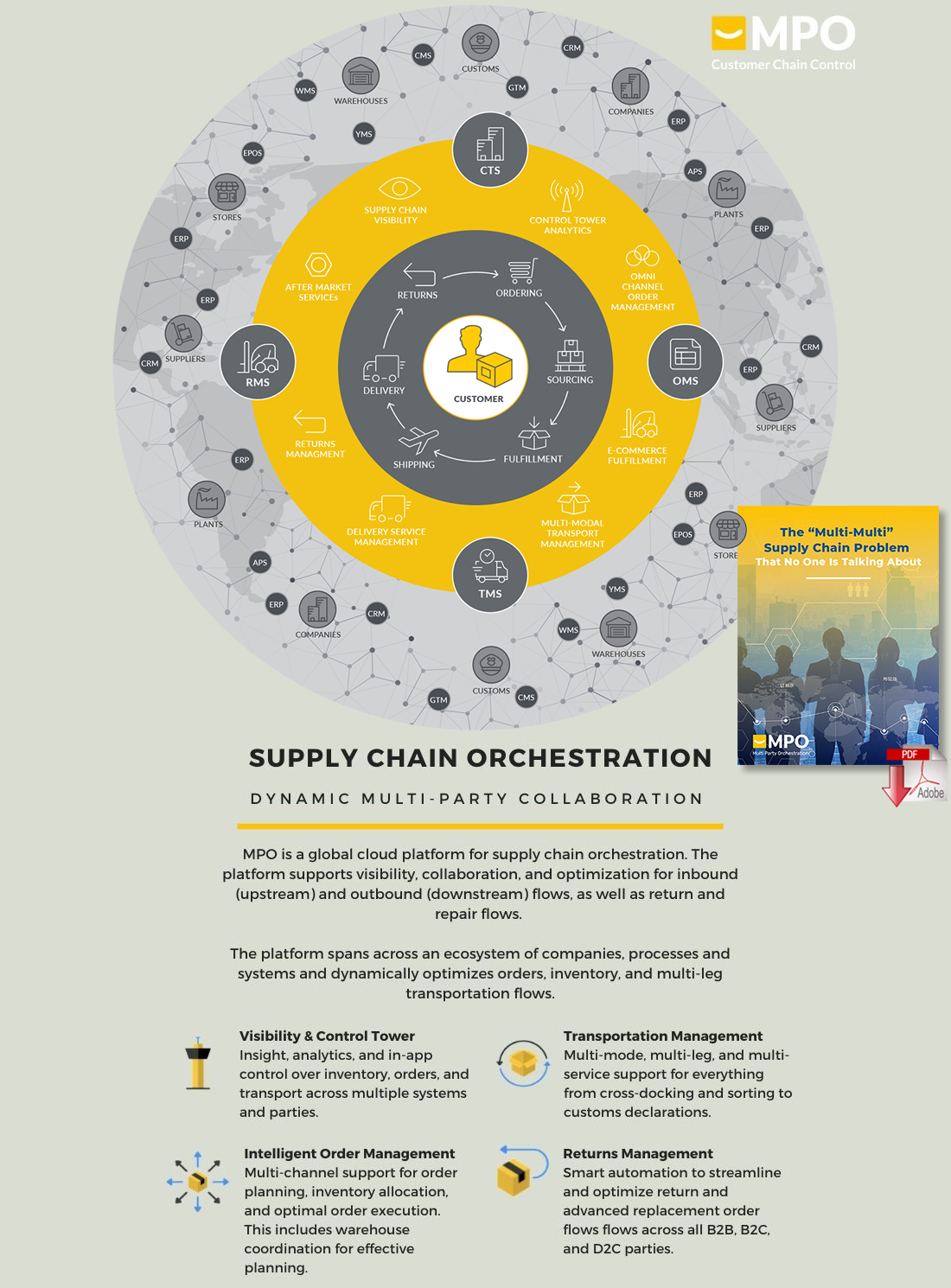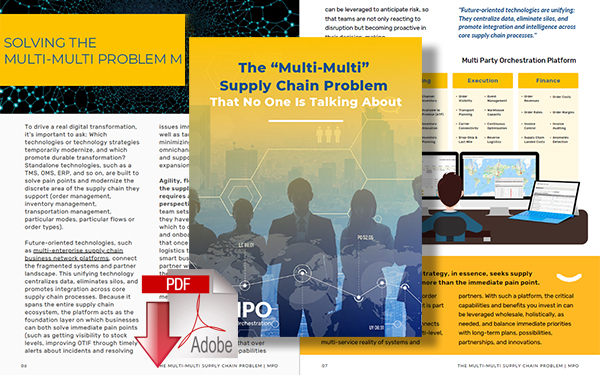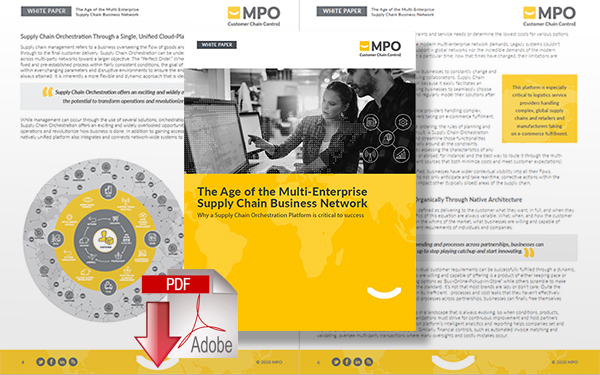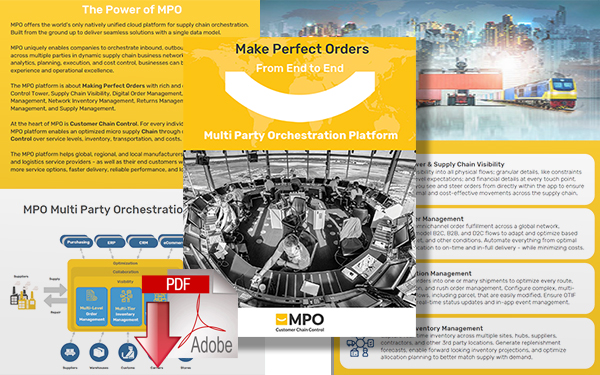What Is The Multi-Multi Problem Costing Your Business?

If you have a hodge-podge of IT platforms assembled over several years, either within your company or bolted on or into others, you know the term “multi-multi” problem refers to the conglomeration of IT solutions many companies operate under.
Multi-party, multi-tier, multi-channel, multi-service, etc.
In my last post on modernizing versus digitally transforming, I mentioned a phenomenon some of us are calling the “multi-multi” problem.
The term refers to the conglomeration of IT solutions many companies operate under.
As a matter of fact, I’ve recently seen a growing number of articles and white papers on “multi-party, multi-tier, multi-channel, multi-service, etc.” business realities.
If you have a hodge-podge of IT platforms assembled over several years, either within your company or bolted on or into others, you know what I mean.
The “multi-multi” problem exacerbates an already complex situation
Years ago, I was managing a service provider to a major personal computer OEM; aside from the manufacturing, we managed most of their supply chain. They would sell their PCs and promise a delivery date to customers when orders came in.
The problem was the computer shipped from one location, and accessories from others, yet they had to be coordinated to land on the customer’s doorstep at the same time. We referred to this to this many-to-one solution as “merge-in-transit.”
Terrifically difficult to achieve at the time because we were trying to coordinate scattered and disparate systems. The parcel carrier systems were also nothing like today’s solutions.
There was no chain of custody, real-time tracking, and tracing, constraint identification, or predictive delivery assurances. Despite our best efforts to synchronize our collective IT systems, our results were mixed. To satisfy our customers, we ended up moving to a business model managing a Supplier Owned Inventory Hub with hundreds of vendors where we would assemble or kit and ship their orders on demand.
Perhaps we should thank Amazon for pushing carriers, postal agencies, and logistics companies into making the massive investments required to report and track a shipment’s every move.
But even today, there’s still a lack of end-to-end supply chain visibility; about half of all organizations don’t really know what’s happening at key integration points across their business transactions. The one-to-many problem has become a many-to-many challenge, requiring sophistication that can feel overwhelming. So many things can happen so fast that it’s a gargantuan task to keep track of all the moving parts and how they affect outcomes.
Read: What Is End-to-End Supply Chain Visibility?
Not dealing with the “multi-multi” is putting you behind
Consider this, 85% of companies said they are losing money to integration issues related to their supply chains. Unless your company is digitally native (and most aren’t) integration becomes a necessity. Furthermore, according to MIT adjunct professor Michael Stonebraker, many enterprises spend about 95% of the IT budget on running legacy code and have their best people spending their time on things like maintenance.
Switching to cloud platforms solves some of these issues, but even “lifting and shifting” to the best cloud-based systems on the market can be a nerve-wracking experience. You may encounter technical challenges, implementation delays, cost overruns, lower-than-promised synergies, and increasing doubts from your own business operators. And the hidden liability of technical debt can undermine efforts.
I became familiar with technical debt years ago as the president and COO of a fast-growing dot.com company where this was a big problem for us. The term “technical debt” refers to the off-balance-sheet accumulation of all the technology work a company needs to do. Simply by being in business, an organization accrues some level of tech debt; it will always have the technology of different ages from different sources serving different purposes.
Uncomplicate things – move with today’s momentum
One way to uncomplicate the multi-multi and shed technical debt and the restricting strings of the annual CAPEX budgeting exercise is to successfully apply approaches from your manufacturing brethren. That is, think of continuous improvement and sustainability instead of “projects” with a defined timetable and lifecycle.
While there are clearly many benefits to tackling the “multi-multi” reality of supply chain complexity, determining the right technology strategy for your businesses is not always clear and easy, but there are a few keys and fundamental changes that will set you on the path of true transformation:
- Go from singular projects to ongoing, long-lived missions
- Shift from temporary, siloed teams to standing cross-functional teams
- Design a plan for the company and not for a specific function within the company
- Switch your thinking from CAPEX one-off funding to OPEX continuous and dynamic OKRs
If you’re a team leader trying to tackle these challenges, it’s difficult to describe what it feels like to think you know what you need, to be uncertain, and to find a solution provider that understands that ambiguity and will get you over the goal line.
Embracing the cloud is becoming more of an impactful business differentiator and less of an IT infrastructure decision with positive implications:
- Improved speed and agility at about 90% improvement in time to market
- Easier innovation, as it takes approx. 95% less time to add digital features
- Efficient scalability, at around 10-15% savings from capacity utilization
- Reduced risk, at about 90% outage reduction
Moving to the cloud also offers an incredible opportunity to shed that technical debt at a far lower cost of ownership and approach the multi-multi reality in a far more productive way that fosters collaboration and efficiency across the network. In my next posts, we’ll take a deeper look at the challenges of managing complex, multi-tier supply chains, as well as the trending technology strategies that are helping businesses overcome the multi-multi problem – at a lower total cost of ownership.
MPO was named “Visionary” in Gartner's 2021 Magic Quadrant for Multienterprise Supply Chain Business Networks. To learn more about the platform's revolutionary approach to supply chain orchestration, download a complimentary copy of our white paper The “Multi-Multi” Supply Chain Problem That No One Is Talking About. You can also get in touch by reaching out to [email protected] or requesting a demo today!
About the Author
Bryce Boothby Jr. is the former executive of Flex, Celestica, ModusLink, Regenersis PLC, and Lulu.com. His eBook, Making the Case for a Digital Transformation, investigates the topic of “Achieving the perfect order” and how companies can differentiate between solution providers, calculate returns on investment, choose a vendor, integrate with legacy systems, sponsor and sell the business case, and ‘try before you buy.’ More MPO Blogs from Bryce Boothby Jr.
Related Resources
The “Multi-Multi” Supply Chain Problem That No One Is Talking About
In this white paper, we examine why the average organization is losing significant profits from supply chain disruptions and why we need to understand the deeper problem to change the outcome. Download Now!
The Age of the Multi-Enterprise Supply Chain Business Network
This white paper offers insight into leveraging your network to derive the greatest possible value under any circumstance, such as through a Supply Chain Orchestration platform that can automate and streamline a wide range of your business needs. Download Now!
Multi-Party Orchestration Platform
In this brochure, you'll find a guide to MPO's unified cloud platform for multi-party orchestration, including its rich and flexible solutions: Control Tower, Supply Chain Visibility, Digital Order Management, Transportation Management, Network Inventory Management, Returns Management, Spare Parts Management, and Supply Management. Download Now!
More Resources from MPO
Related Article: Modernizing Is Not Digitally Transforming - So what’s the Right Path for You and Your Company?
Article Topics
MPO News & Resources
TMS+ Go Beyond Transport to Optimize Cost, Service, & Resiliency Multi-Party Orchestration Platform When It Comes to Digital Transformation You May Not Be Doing What You Think How Chief Operating Officers are Achieving Results with Supply Chain Software SPARK Matrix Transportation Management System Software Analyst Report Top Trends Driving Change and Technology Strategy Within Logistics & Transportation Management 5 Key Steps for Optimizing your Last Mile Delivery More MPOLatest in Supply Chain
Spotlight Startup: Cart.com Walmart and Swisslog Expand Partnership with New Texas Facility Nissan Channels Tesla With Its Latest Manufacturing Process Taking Stock of Today’s Robotics Market and What the Future Holds U.S. Manufacturing Gains Momentum After Another Strong Month Biden Gives Samsung $6.4 Billion For Texas Semiconductor Plants Apple Overtaken as World’s Largest Phone Seller More Supply Chain


















